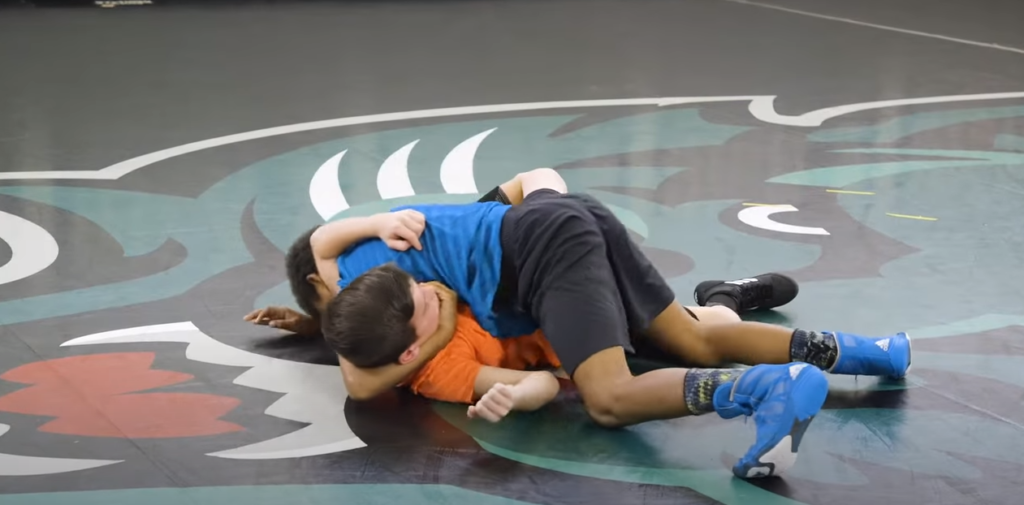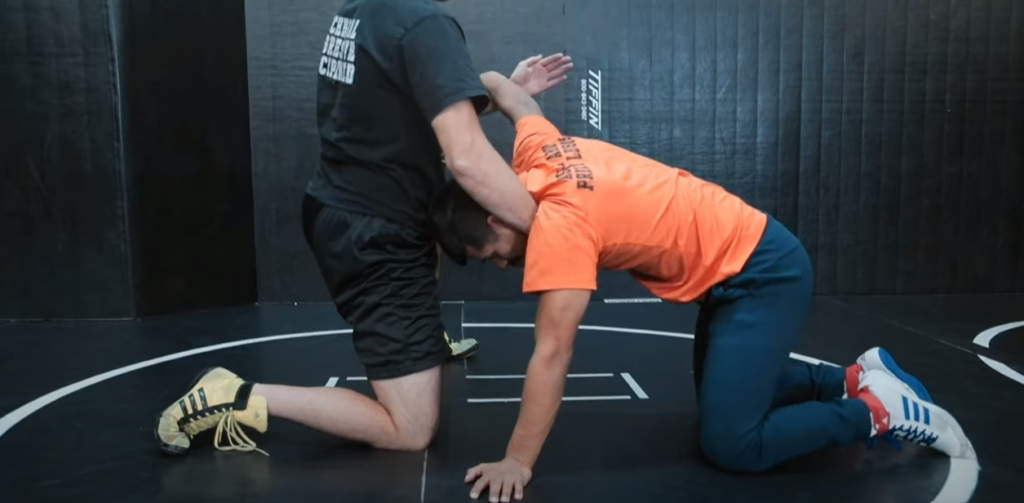Wrestling, a sport steeped in tradition and history, is characterized by its intense physicality, strategy, and the pursuit of victory through various methods. One of the most definitive ways a match concludes is through a “fall.” A fall in wrestling signifies the ultimate achievement — a clear and decisive victory obtained by pinning an opponent’s shoulders to the mat. In this article, we will delve into the nuances of what constitutes a fall in wrestling, the techniques employed to secure it, and the significance of this outcome.
The Essence of a Fall

A fall, also known as a pin, occurs when one wrestler successfully places both of their opponent’s shoulders on the mat for a specified duration. This position renders the opponent immobile and unable to continue the match. In most amateur wrestling styles, including freestyle and folkstyle, a fall occurs when both shoulders are held down for a count of two seconds by the referee. This act signifies the immediate end of the match, with the wrestler who secured the fall declared the winner.
Techniques and Strategies
Securing a fall in wrestling requires a combination of skill, technique, and timing. Wrestlers employ a variety of maneuvers to position their opponent’s shoulders on the mat. Here are some common techniques used to achieve a fall:
1. The Half Nelson
| Technique Snapshot | Execution |
|---|---|
| Objective | Apply pressure on the opponent’s head and neck, control one arm. |
| Key Elements | Leverage, body weight. |
| Result | Opponent’s shoulders forced onto the mat. |
The Half Nelson is a symphony of control, using the opponent’s own anatomy against them. A wrestler, with the prowess of a tactician, positions themselves beside their opponent, seizing one arm with calculated precision. Their free arm arcs over the opponent’s head, creating a vice-like grip that constricts their mobility. Leaning into the move, the wrestler’s body weight becomes an instrument of inevitability, guiding the opponent’s shoulders onto the mat, a breathtaking crescendo of domination.
2. The Cradle
| Technique Snapshot | Execution |
|---|---|
| Objective | Trap a leg and arm, immobilize shoulders. |
| Key Elements | Precision, seamless transition. |
| Result | Opponent’s shoulders locked down, victory imminent. |
Imagine a dance where limbs become the notes in a pinning symphony. The Cradle, a technique akin to an intricate ballet, involves a wrestler artfully ensnaring an opponent’s leg and arm. This bewitching combination renders the opponent helpless, their shoulders trapped in the spellbinding melody of the move. Executed with seamless grace, the Cradle is a testament to the wrestler’s artistry, as victory is woven with every twist and turn.
3. The Turk
| Technique Snapshot | Execution |
|---|---|
| Objective | Control opponent’s leg, apply upper body pressure. |
| Key Elements | Precision, torque. |
| Result | Opponent’s shoulders yield to the force applied. |
Enter the Turk, a technique that transforms a wrestler into a maestro of manipulation. With the opponent’s leg under their control, the wrestler orchestrates a complex interplay of torque and pressure. As the opponent’s upper body yields to the wrestler’s expertise, the mat becomes a canvas for the artistry of domination. The Turk stands as a testament to the wrestler’s aptitude for control, culminating in the opponent’s shoulders meeting the canvas in a harmonious union.
4. The Power Half
| Technique Snapshot | Execution |
|---|---|
| Objective | Apply upper body pressure, leverage body weight. |
| Key Elements | Leverage, force. |
| Result | Opponent’s shoulders succumb to the force. |
Like a titan of control, the Power Half commandeers the battlefield. Anchoring themselves above their opponent, a wrestler conjures an orchestration of pressure and leverage. Their upper body prowess exerts a gravitational pull, a celestial force that drapes the opponent’s shoulders inescapably onto the mat. The Power Half, a triumphant blend of strength and cunning, captures the essence of wrestling mastery.
5. The Chicken Wing
| Technique Snapshot | Execution |
|---|---|
| Objective | Manipulate opponent’s arm, expose vulnerability. |
| Key Elements | Precision, joint control. |
| Result | Opponent’s shoulders yield, defeat is imminent. |
In the realm of the Chicken Wing, a wrestler metamorphoses into a sculptor of vulnerability. With artistic finesse, they manipulate their opponent’s arm, a malleable masterpiece in their hands. As the opponent’s anatomy bends to the will of the wrestler, their shoulders emerge as a canvas of submission. The Chicken Wing, a technique of strategic manipulation, carves the path to triumph with meticulous artistry.
6. The Stack
| Technique Snapshot | Execution |
|---|---|
| Objective | Drive opponent’s head, control legs. |
| Key Elements | Pressure, immobilization. |
| Result | Opponent’s shoulders embraced by the mat. |
The Stack, an embodiment of dominance, unfurls like a dramatic tableau. Wrestler and opponent entwined, the former uses the opponent’s head as a lever, compelling it towards the chest. In this arresting display of pressure, the wrestler controls the opponent’s legs, weaving a narrative of immobilization. As the opponent’s body succumbs to the poetry of compression, their shoulders meet the mat in a breathtaking surrender.
7. The Pinning Combination
A wrestler’s repertoire is an ever-evolving tapestry, and the Pinning Combination is a virtuosic improvisation. Elements from the techniques above fuse in a symphonic display of creativity and control. It’s a masterstroke of adaptability, a living testament to a wrestler’s capacity to orchestrate victory through ingenuity.
The Significance of a Fall

A fall is the ultimate achievement in a wrestling match. It showcases the dominance and technical prowess of the winning wrestler. Beyond the immediate victory, a fall also holds symbolic value. It signifies the end of a contest, allowing both wrestlers and spectators to acknowledge the superiority of one competitor over the other.
Conclusion
A fall in wrestling is the pinnacle of achievement, showcasing a wrestler’s mastery of technique, timing, and control. Wrestlers employ a range of moves and strategies to secure falls, with each technique requiring precision and skill. The significance of a fall extends beyond victory, as it symbolizes a clear and decisive triumph over an opponent. So, whether you’re a wrestler, a wrestling enthusiast, or simply curious about the sport, understanding the mechanics of a fall adds depth to your appreciation of this ancient and dynamic sport.
FAQ
In most amateur wrestling styles, a fall is counted when both shoulders are held down for a count of two seconds.
No, a fall requires both shoulders to be simultaneously in contact with the mat.
While falls are the most common way to win a match, in some cases, a match may be stopped due to injury or disqualification before a fall occurs.
Referees closely monitor the wrestlers’ shoulder positions, using their judgment and experience to determine if both shoulders are in contact with the mat for the required duration.
If both wrestlers’ shoulders are on the mat, the situation is considered a “double fall.” In most cases, the match is nullified, and neither wrestler wins.
Yes, a fall can occur at any point during the match, including during regulation time, overtime, or sudden victory periods.